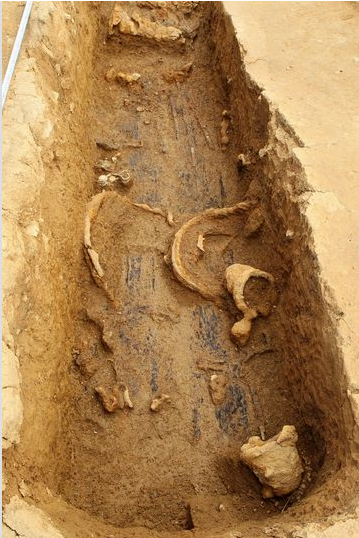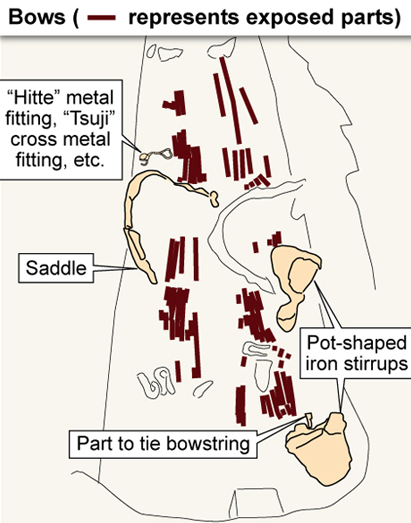Akihiko Magoori / Shunsuke Nakamura
Source - http://ajw.asahi.com/article/behind_news/social_affairs/AJ201306080055

The site where bows and other ornaments were discovered in Koga, Fukuoka Prefecture (Haruki Morishita)

Lacquered bows and farm tools from at least 14 centuries ago were uncovered in a site here that amazed archaeology buffs earlier this spring with the discovery of a complete set of trappings and ornaments from a war horse.
Koga municipal board of education officials said June 7 it is extremely rare for so many items to be buried close to a burial mound.
The latest discoveries, in the Taniyama district, are so well preserved that scholars can determine the shape of the bows, as well as how metal ornaments were attached.
The findings will likely help researchers in determining what rituals were involved in selecting burial accessories.
The bows were uncovered at a site about 5 meters from the Funabaru burial mound, which dates to the late sixth century to early seventh century. The lacquered bows were between 2.2 to 2.3 meters long. At least six bows were discovered buried in a row in the northern part of the site.
Metal ornaments used on the bows were also found at equal distances to each other. Parts attached to the tips of the bows to tie the bowstring were also found. The parts were made of metal and antlers.
It is apparently the first time that so many bows have been found in a single location during excavations of sites from the "burial mounds age," which ran from the third through seventh centuries. The set will likely exceed the bows found at the Doboyama burial mound in Takatsuki, Osaka Prefecture.
Several dozen arrowhead were also found together in the southern part of the site. Among the farm tools found were a spade head and sickle made from iron.
Researchers also confirmed that there were at least four sets of horse armor at the site, which extended for about 5.3 meters in a north-south direction. A short extension was found at a right angle to the southern part of the site, forming a reverse L-shape.